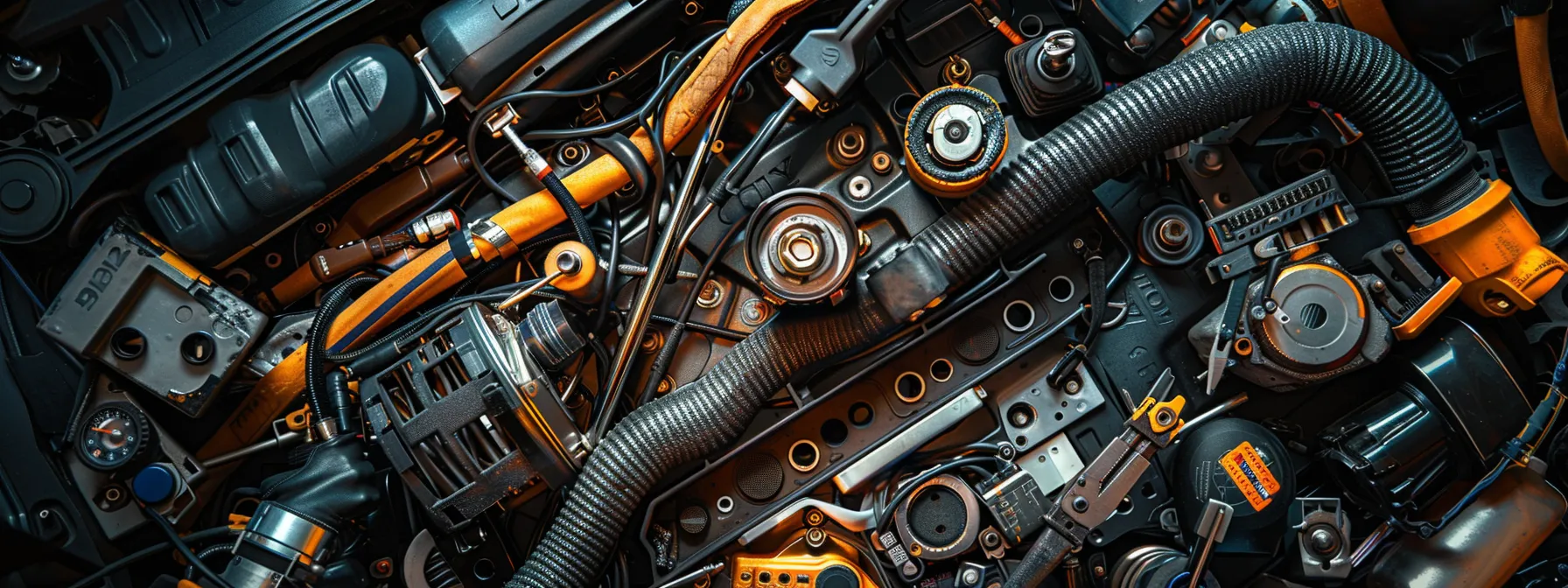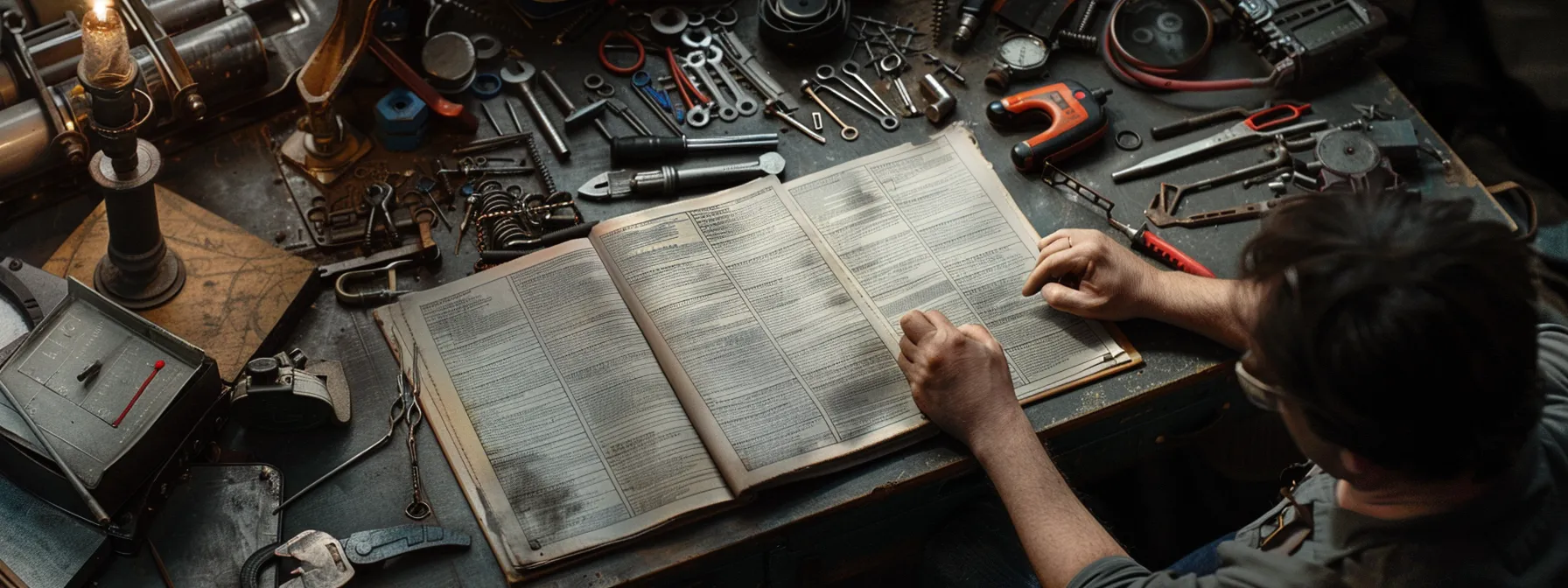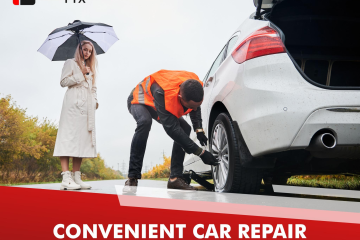Routine vehicle inspections are crucial for maintaining optimal car performance. Did you know that regular checks can prevent costly repairs and enhance safety on the road? This comprehensive guide will explore the importance of routine vehicle inspections, including key areas like the exterior inspection checklist and under-the-hood assessments of the engine and fluids. By engaging with this content, readers can learn how to spot issues like worn brake pads or faulty air conditioning, ensuring their vehicles operate safely and efficiently. Ultimately, this guide aims to empower car owners to take proactive steps in maintaining their vehicles and addressing common pain points in car care.
Key Takeaways
- routine vehicle inspections are essential for extending the lifespan of a car
- early detection of issues can prevent costly major repairs and enhance safety
- maintaining optimal fluid levels and inspecting key components ensures better vehicle performance
- a well-structured maintenance logbook helps track inspections and informs future maintenance needs
- recognizing signs that require professional assistance can prevent minor issues from escalating
Understanding the Importance of Routine Vehicle Inspections

Routine vehicle inspections play a crucial role in extending vehicle lifespan through regular checks of essential components like the timing belt and muffler. These inspections enhance safety by identifying potential issues early, thereby preventing costly major repairs. They also maintain optimal vehicle performance, including fuel efficiency, and ensure compliance with legal and warranty requirements. Understanding these facets underscores the importance of diligent vehicle maintenance.
Extending Vehicle Lifespan Through Regular Checks
Regular vehicle inspections are essential for extending the lifespan of a car. Routine checks, such as monitoring the oil levels and ensuring that the windshield washer fluid is topped up, can help prevent mechanical failures and maintain performance. Additionally, components like the clutch should be thoroughly assessed during these inspections to identify any signs of wear and address them before they lead to more significant issues.
By committing to regular maintenance, car owners enhance the safety and reliability of their vehicles. This proactive approach allows for timely replacement of critical parts, minimizes the risk of breakdowns, and ultimately saves money on extensive repairs. Consideration of these factors illustrates how systematic inspections contribute to longer vehicle life and improved driving experiences:
- Monitor oil levels for optimal engine performance.
- Check and replace windshield washer fluid as necessary.
- Inspect the clutch for any signs of wear.
- Assess brakes and tires to ensure safety.
- Evaluate suspension system for ride quality.
Enhancing Safety by Identifying Potential Issues Early
Routine vehicle inspections significantly enhance safety by identifying potential issues before they escalate into serious problems. For instance, a worn hose can lead to a coolant leak, which, if undetected, may cause engine overheating. Regular checks also include inspecting seat belts to ensure they function correctly, as faulty seat belts compromise passenger safety in the event of an accident.
Moreover, an inspection of components such as the spare tire, spark plugs, and fluid levels can prevent hazardous driving conditions. A spark plug malfunction can lead to engine misfires while an improperly inflated spare tire may not provide adequate support in an emergency. By addressing these issues early through routine inspections, drivers can ensure their vehicles are road-ready and mitigate the risk of breakdowns or accidents, thereby promoting overall road safety.
Saving Money by Preventing Major Repairs
Routine vehicle inspections provide a powerful strategy for saving money by preventing major repairs over time. A comprehensive checklist during these inspections allows car owners to identify potential issues, such as wear and tear in the steering system or damage to the pump. By addressing these concerns early, vehicle owners can avoid costly breakdowns and ensure their steering wheel responds effectively, maintaining optimal control and safety on the road.
Investing in routine inspections positions car owners to manage their vehicle’s health proactively. By recognizing early signs of wear, such as unusual noises or handling problems, they can take corrective action before more severe damages occur. This approach not only helps in sidestepping significant repair expenses but also enhances the longevity of critical components, ensuring that the vehicle remains reliable and safe throughout its lifespan.
Maintaining Optimal Vehicle Performance
Routine vehicle inspections are essential for maintaining optimal vehicle performance, as they ensure that crucial components such as the axle are functioning correctly. Regular checks allow for early detection of issues like lubricant degradation or fluid leaks, which can significantly impact overall vehicle efficiency. By addressing potential problems before they escalate, drivers can maintain a smoother ride and enhance fuel efficiency.
Another important aspect of these inspections involves monitoring the condition of the oil filter and assessing for any signs of corrosion within key systems. Keeping these components in optimal condition helps to ensure that fluid power systems operate effectively, maintaining the integrity of a vehicle’s performance. This proactive approach not only safeguards against unexpected breakdowns but also contributes to the longevity and reliability of the vehicle over time.
Complying With Legal and Warranty Requirements
Complying with legal and warranty requirements is essential for vehicle owners to ensure longevity and optimal performance. Regular routine inspections help detect issues, such as problems with the catalytic converter or warning signs like the check engine light, which may indicate underlying mechanical failures. By entrusting these inspections to a qualified auto mechanic, car owners not only adhere to legal standards but also protect their warranties, further ensuring their vehicles operate efficiently and safely.
Moreover, consistent maintenance checks safeguard the functionality of critical systems, including fluid levels, which can impact overall performance. Keeping fluid levels in check and addressing any necessary repairs promptly can prevent costly violations of emissions regulations or warranty claims. A proactive approach to routine vehicle inspections empowers owners to stay compliant, ultimately fostering a dependable and trouble-free driving experience.
Preparing Your Vehicle for Inspection Safely

Preparing a vehicle for inspection involves several key steps to ensure safety and efficiency. First, gathering necessary tools and equipment is essential for thorough assessments of components such as the air filter and power steering. Ensuring the vehicle is positioned on a flat surface, securing it with the parking brake and wheel chocks, and wearing appropriate safety gear are vital practices. Lastly, consulting the owner’s manual provides specific guidelines tailored to the vehicle, reinforcing the importance of traction and wear checks during the inspection process.
Gathering Necessary Tools and Equipment
To prepare a vehicle for inspection, it is crucial to gather the appropriate tools and equipment necessary for assessing various components effectively. Items such as a tire pressure gauge can help check tire inflation levels, while a wrench set is essential for inspecting and adjusting the serpentine belt. Having motor oil, a funnel, and an oil filter on hand is also beneficial, as these can facilitate necessary oil changes and ensure smooth engine performance during the inspection process.
Additionally, having diagnostic tools like an OBD-II scanner allows vehicle owners to identify possible issues that may trigger warning lights, such as those related to the alternator or engine performance. Equipping oneself with these tools not only streamlines the inspection process but also empowers car owners to address minor maintenance tasks, reducing the risk of more significant problems in the future. Thus, being prepared significantly contributes to maintaining optimal vehicle condition and overall safety.
Ensuring the Vehicle Is on a Flat Surface
Ensuring that a vehicle is positioned on a flat surface is essential before conducting a thorough inspection. A level ground allows for accurate assessments of critical fluid levels, such as brake fluid and coolant, which are crucial for safe and efficient operation. Inspectors can better evaluate the vehicle’s exhaust system and differential without the distortion caused by an incline, enabling them to identify issues that might otherwise go unnoticed.
A flat surface also promotes safety during the inspection process. When inspecting components that require physical access, such as the suspension or brake systems, a stable foundation minimizes the risk of unexpected rolling or shifting. This stability is particularly important when evaluating noise levels from the engine or transmission, as a secure position helps isolate the source of any potential irregular sounds. Proper vehicle positioning significantly enhances the effectiveness of routine inspections and contributes to overall maintenance efficacy.
Securing the Vehicle With Parking Brake and Wheel Chocks
Securing the vehicle with the parking brake and wheel chocks is a pivotal step in preparing for an inspection. Engaging the parking brake prevents the vehicle from rolling, especially when addressing components under the hood or inspecting the radiator for coolant leaks. For added safety, using wheel chocks on the tires further stabilizes the vehicle, ensuring that the inspection can proceed without the distraction of potential movement caused by equipment adjustments or personnel shifts.
The frequency of inspections can vary based on the vehicle’s usage and age, but taking the time to secure the vehicle properly enhances safety and efficiency. During an inspection, mechanics often need to assess tire tread and other critical components. Securing the vehicle effectively allows for thorough evaluations without the risk of unexpected movement, thereby promoting a safer working environment and fostering a more comprehensive and effective routine vehicle inspection.
Wearing Appropriate Safety Gear
Wearing appropriate safety gear is fundamental for anyone involved in vehicle inspections, as it helps mitigate the risk of injuries while handling components like the chassis or inspecting the transfer case. Personal protective equipment, such as gloves and safety glasses, ensures that individuals remain safe when working with potentially hazardous materials, including antifreeze, which can be toxic if not handled correctly. This practice is particularly important in fleet management, where multiple vehicles require regular assessments, emphasizing the need for a consistent safety protocol to protect the personnel involved in routine inspections.
Furthermore, proper safety attire helps maintain a professional environment during vehicle assessments. Mechanics should wear durable work boots to protect against falling objects and provide support during tasks like tire rotation and suspension checks. By prioritizing safety gear, technicians not only shield themselves from physical harm but also enhance their efficiency, allowing them to focus on delivering thorough inspections that ensure each vehicle meets the highest maintenance standards.
Consulting the Owner’s Manual for Specific Guidelines
Consulting the owner’s manual is essential for vehicle owners, as it provides specific guidelines tailored to their unique model. This resource contains vital information about maintaining various systems, such as the ignition system, ensuring that both automatic and manual transmission components receive the appropriate levels of maintenance. Understanding these details can help in identifying when to perform routine checks and what precautions to take, ultimately enhancing vehicle performance.
The owner’s manual also outlines the manufacturer’s recommendations for wheel alignment and routine inspections, which are crucial for optimal driving conditions. It specifies how to protect essential parts from dust accumulation, which can lead to mechanical issues over time. By following the manual’s advice, car owners can ensure their vehicles remain in peak condition, allowing for smooth operation and longevity.
Exterior Inspection Checklist for Your Vehicle

The exterior inspection of a vehicle is vital for ensuring optimal performance and safety. This checklist includes examining tire tread depth and pressure, inspecting headlights, taillights, and turn signals, and checking the condition of the windshield and wiper blades. Further assessments involve evaluating bodywork for dents, scratches, rust, and the condition of mirrors and glass, which all contribute to the vehicle’s safety and drivability.
Addressing these key areas helps prevent vibration issues in the drivetrain, ensures proper hydraulic fluid levels, and enhances overall vehicle operation. Each inspection component plays a crucial role in identifying potential problems before they escalate, reflecting the importance of routine vehicle maintenance.
Examining Tire Tread Depth and Pressure
Examining tire tread depth and pressure is a crucial aspect of routine vehicle inspections that significantly impacts overall vehicle safety and performance. Worn or improperly inflated tires can lead to reduced traction, affecting the brake system and increasing the likelihood of accidents. Mechanics often recommend using a tread depth gauge to assess whether tires have sufficient tread for safe driving conditions, with a minimum depth of 2/32 of an inch generally being acceptable. However, deeper treads may be necessary for wet or off-road driving.
In addition to tread depth, checking tire pressure is equally important in ensuring a balanced and responsive driving experience. Under-inflated tires can lead to increased wear and decreased fuel efficiency, while over-inflation can compromise vehicle handling. Car owners should consult their vehicle’s manual for the recommended tire pressure, which is often displayed on a sticker inside the driver’s door. By addressing these tire maintenance aspects during vehicle inspections, owners can enhance vehicle performance and promote a safer driving environment.
Inspecting Headlights, Taillights, and Turn Signals
Inspecting headlights, taillights, and turn signals is essential for ensuring that a vehicle operates safely on the road. Drivers rely on these components for visibility during nighttime driving and for signaling their intentions to other road users. Regular checks should include examining the brightness of lights and ensuring that there are no bulb failures, which can compromise safety and lead to accidents.
Additionally, any signs of moisture or fogging inside the lens may indicate potential issues that require immediate attention. Replacing burned-out bulbs promptly not only enhances visibility but also ensures compliance with traffic regulations. By maintaining properly functioning lighting systems, vehicle owners can significantly reduce the risk of collisions and enhance their overall driving experience.
Checking Windshield and Wiper Blade Condition
Checking the condition of the windshield and wiper blades is crucial for maintaining safe driving visibility. A clean, undamaged windshield ensures clarity, while wiper blades that are in good shape effectively remove rain or debris, preventing streaks that could impair vision. Car owners should regularly inspect wiper blades for signs of wear, such as cracks or fraying edges, as these can hinder their performance and compromise safety.
Additionally, maintaining the windshield itself is important. Any chips or cracks should be repaired promptly to avoid larger damages that may obstruct the driver’s view. Regularly treating the windshield with a suitable cleaning solution can also enhance clarity and prolong the life of the wiper blades. By prioritizing these checks, vehicle owners safeguard themselves against potential hazards on the road, ensuring a more reliable and secure driving experience.
Assessing Bodywork for Dents, Scratches, and Rust
Assessing bodywork for dents, scratches, and rust is a critical step in routine vehicle inspections. Car owners should regularly examine their vehicle’s surface, as minor blemishes can quickly develop into more severe issues if left unattended. For instance, a small scratch might allow moisture to penetrate the paint, leading to rust formation that can weaken the body structure over time.
In addition to visual inspections, using your fingertips to feel for irregularities can help identify dents that may not be immediately visible. Addressing these issues early through proper repairs not only improves the vehicle’s appearance but also helps maintain its value. This proactive approach ensures that your car remains in optimal condition, reducing the risk of further deterioration:
- Regularly check for surface damage.
- Use touch to identify hidden dents.
- Avoid moisture penetration by repairing scratches promptly.
- Maintain vehicle appearance to uphold its value.
- Ensure bodywork integrity to prevent rusting.
Evaluating the Condition of Mirrors and Glass
Evaluating the condition of mirrors and glass is vital in routine vehicle inspections, as clear visibility is crucial for safe driving. Car owners should regularly check for cracks, chips, or scratches on mirrors and windows, as these imperfections can hinder visibility and increase the risk of accidents. Additionally, ensuring side and rear-view mirrors are securely mounted and adequately adjusted is essential for maintaining a comprehensive view of the surroundings.
Proper maintenance of glass surfaces involves using suitable cleaning agents to remove dirt and grime, enhancing driver visibility during various weather conditions. Addressing any minor damages promptly can prevent larger issues, such as the potential for glass shattering in the event of an accident. By prioritizing these evaluations, vehicle owners contribute to safer driving experiences and overall vehicle integrity.
Under-the-Hood: Engine and Fluids Inspection

Under-the-Hood: Engine and Fluids Inspection
Checking engine oil levels and quality is vital for maintaining engine health, while inspecting coolant levels and the condition of the radiator ensures optimal temperature control. Verifying brake and power steering fluid levels contributes to safe driving, and examining belts and hoses for signs of wear can prevent unexpected breakdowns. Lastly, testing battery health and connections is essential for reliable vehicle performance.
Checking Engine Oil Level and Quality
Checking the engine oil level and quality is a vital part of routine vehicle maintenance. Engine oil lubricates moving parts, reduces friction, and helps to cool the engine, making it essential for overall vehicle performance. Car owners must regularly inspect the oil level using the dipstick, ensuring it is within the recommended range for optimal engine functioning.
Additionally, assessing the oil’s quality is equally important. Clean oil appears a clear, amber color, while dark or contaminated oil may indicate degradation that needs addressing. Regular oil changes as part of a proactive maintenance schedule can prevent severe damage and ensure the engine operates smoothly and efficiently, ultimately extending the vehicle’s lifespan:
- Check the engine oil level using the dipstick.
- Ensure oil level is within the recommended range.
- Assess the color and clarity of the oil.
- Change oil if it appears dark or contaminated.
- Follow a routine oil change schedule for optimal performance.
Inspecting Coolant Levels and Radiator Condition
Inspecting coolant levels and radiator condition is critical in routine vehicle maintenance, as these elements play a vital role in regulating engine temperature. During an inspection, vehicle owners should check the coolant reservoir to ensure it is filled to the appropriate level and examine the coolant’s color and consistency, as any signs of contamination may indicate the need for coolant replacement. Maintaining optimal coolant levels helps prevent engine overheating, which could lead to severe mechanical failures.
Additionally, assessing the radiator’s condition can highlight potential issues that may compromise engine performance. Car owners ought to visually inspect the radiator for any signs of leaks, corrosion, or damage, as these problems could significantly impact the vehicle’s cooling efficiency. Addressing radiator concerns promptly not only safeguards against engine overheating but also contributes to the overall reliability and longevity of the vehicle.
Verifying Brake and Power Steering Fluid Levels
Verifying brake and power steering fluid levels is a fundamental part of routine vehicle inspections that can greatly enhance safety and performance. Brake fluid plays a critical role in the braking system, where low fluid levels can lead to decreased braking efficiency, putting drivers at risk. Regularly checking these fluid levels ensures that the braking system remains responsive and effective, while also helping to identify potential leaks or other issues before they escalate into severe problems.
Power steering fluid is essential for the smooth operation of the steering system, allowing for easy and precise maneuverability. Insufficient fluid levels can cause difficulty in steering, leading to an unsafe driving experience. Car owners are advised to periodically inspect the power steering fluid reservoir, ensuring it is filled to the recommended level, and to check for any signs of contamination. Addressing these fluids promptly helps maintain control over the vehicle and fosters a safer driving environment:
Examining Belts and Hoses for Signs of Wear
Examining belts and hoses for signs of wear is a critical component of routine vehicle inspections. These elements play vital roles in the vehicle’s operation, as they are responsible for transferring fluids and power throughout the engine compartment. A thorough inspection should focus on looking for cracks, fraying, or bulging on hoses and checking belts for signs of cracking or glazing, which may indicate impending failure. Addressing any issues promptly can prevent costly repairs and maintain optimal performance.
Regular checks of belts and hoses can enhance a vehicle’s reliability and efficiency. For instance, a worn-out serpentine belt can cause various components, like the alternator and power steering pump, to function improperly, affecting overall vehicle performance. Similarly, a leaking hose can lead to coolant loss, potentially resulting in engine overheating. Therefore, vehicle owners should include belt and hose examinations as part of their maintenance routine to ensure their vehicle runs smoothly:
- Check for cracks or signs of deterioration on belts.
- Inspect hoses for leaks, bulges, or fraying.
- Replace any damaged belts or hoses immediately to prevent larger issues.
- Monitor tension on belts to prevent slippage.
Testing Battery Health and Connections
Testing battery health and connections is essential for maintaining optimal vehicle performance. A weak or failing battery can lead to starting issues or unreliable electrical systems, significantly impacting the driving experience. Mechanics recommend regularly checking the battery’s voltage using a multimeter, which helps assess its overall condition, ensuring that it provides adequate power to the vehicle’s electrical components.
In addition to voltage tests, inspecting the battery connections for corrosion or loose terminals is crucial. Clean connections promote efficient power transfer and help prevent electrical problems. For instance, addressing any corroded terminals promptly can restore the battery’s performance and prolong its lifespan, ensuring reliable operation and reducing the risk of sudden failures while on the road.
Interior Inspection for Safety and Comfort

Interior inspections are essential for ensuring both safety and comfort in vehicles. These assessments encompass testing the functionality of seat belts and airbags, checking dashboard warning lights and gauges, and ensuring proper operation of the HVAC system. Additionally, verifying the function of the horn and controls, along with assessing the condition of seats and upholstery, contributes to a secure and pleasant driving experience.
By focusing on these critical components, car owners can address potential issues early, maintaining a safe and comfortable environment while enhancing overall vehicle performance. Each topic covered in the following sections is crucial to fostering a reliable driving experience.
Testing Functionality of Seat Belts and Airbags
Testing the functionality of seat belts and airbags is essential for enhancing vehicle safety. Seat belts should retract smoothly and latch securely, ensuring they provide maximum protection during an accident. Regular checks for any signs of wear or damage, such as frayed straps or faulty latches, can determine if replacements are necessary. Similarly, validating the operational status of airbags through the vehicle’s diagnostic system helps identify any issues that could compromise occupancy safety in a collision.
This process not only benefits the occupants but also fosters responsible vehicle ownership. By understanding the crucial role that seat belts and airbags play in minimizing injury during accidents, owners can prioritize these inspections for overall vehicle safety. Regularly assessing the condition of these components ensures peace of mind when driving:
- Examine seat belts for secure latches and smooth retraction.
- Check for visible wear or damage on seat belts.
- Test airbags through the vehicle’s diagnostic system.
- Understand the importance of these components for occupant safety.
Checking Dashboard Warning Lights and Gauges
Checking dashboard warning lights and gauges is an essential part of routine vehicle inspections. These indicators serve as critical alerts for car owners about potential issues such as engine problems, low fuel, or brake system malfunctions. Regularly verifying that warning lights illuminate correctly and gauges reflect accurate readings helps ensure a vehicle’s safe and reliable operation.
Recognizing the meaning of dashboard alerts empowers drivers to address issues immediately before they escalate into costly repairs. For instance, a check engine light might signify a minor issue like a loose gas cap, but it could also indicate a more serious problem that requires professional attention. By maintaining vigilance over these indicators, vehicle owners can make informed decisions that enhance overall car maintenance and safety.
Ensuring Proper Operation of the HVAC System
Ensuring the proper operation of the HVAC system is a vital aspect of routine vehicle inspection that significantly impacts driver and passenger comfort. A well-functioning HVAC system not only maintains a comfortable cabin environment but also plays a key role in defogging and defrosting windows during adverse weather conditions. Car owners should regularly check the performance of their HVAC system, listening for unusual noises or assessing whether the air is effectively cooled or heated as needed.
Regular inspections of the HVAC system should include checking the air filter for blockages, as a dirty filter can restrict airflow and reduce system efficiency. Additionally, vehicle owners must ensure that all controls are operational, including the fan speed and temperature settings. By keeping the HVAC system in optimal condition, drivers can enjoy a safer and more pleasant driving experience, ultimately enhancing overall vehicle maintenance and comfort:
Verifying the Function of the Horn and Controls
Verifying the function of the horn and controls is crucial for ensuring safe driving. The horn serves as a vital communication tool between drivers and other road users, alerting others to the vehicle’s presence or intentions. Regular checks should include testing the horn to confirm it operates effectively and is audible, which enhances overall road safety.
Additionally, confirming that controls such as lights, wipers, and the infotainment system are functional promotes comfortable driving experiences. Non-responsive controls can lead to hazardous situations, particularly in challenging weather conditions. Addressing these concerns through routine inspections ensures that drivers maintain full command over their vehicle and can respond promptly in any situation:
- Test the horn for proper functionality and sound level.
- Check the operation of dashboard controls and indicators.
- Evaluate the responsiveness of wiper blades and lighting systems.
- Ensure the infotainment system operates correctly, providing essential information.
Assessing the Condition of Seats and Upholstery
Assessing the condition of seats and upholstery is essential for ensuring both comfort and safety during vehicle operation. Regular inspections allow car owners to identify wear, such as tears or stains, which can significantly affect the driving experience. For instance, frayed seat covers can pose a safety risk by compromising the proper use of seat belts or causing distractions while driving.
Moreover, maintaining the upholstery contributes to the overall aesthetics and resale value of the vehicle. Car owners should incorporate routine cleaning and conditioning of seat materials to prevent damage and extend longevity. Addressing these issues early nurtures a pleasant environment for both drivers and passengers, making the vehicle a more enjoyable place to be:
- Regularly check for tears or stains on seats.
- Clean and condition upholstery to prevent damage.
- Assess the functioning of seat adjustments for safety.
- Examine seams for signs of wear or detachment.
Establishing a Routine Inspection Schedule

Establishing a routine inspection schedule is vital for optimal car maintenance. This includes determining inspection frequency based on the vehicle’s usage, creating a maintenance logbook to track activities, and setting reminders for regular check-ups. Additionally, integrating seasonal inspections and knowing when to seek professional assistance will ensure that vehicles remain in peak condition for safe and efficient operation.
Determining Inspection Frequency Based on Usage
Determining the inspection frequency based on vehicle usage is essential for effective maintenance and overall vehicle longevity. Daily drivers, for instance, may require more frequent inspections due to the wear and tear associated with extensive road use, while vehicles utilized occasionally may adhere to a less rigorous schedule. Tailoring the inspection approach according to how often and in what conditions a car is operated can enhance efficiencies and safety.
For vehicles subjected to harsh environments or heavy loads, such as off-road vehicles or work trucks, monthly inspections are recommended to monitor issues that may arise more rapidly under these conditions. Conversely, vehicles used primarily for short trips within urban settings can often suffice with quarterly inspections. Establishing a clear inspection schedule ensures vehicle owners maintain optimal car performance and can proactively address maintenance needs:
Creating a Maintenance Logbook
Creating a maintenance logbook is an essential practice for vehicle owners seeking to keep track of their routine vehicle inspections and overall car maintenance. This logbook can serve as a detailed record of inspections performed, repairs made, and any noteworthy observations regarding the vehicle’s performance. By maintaining accurate records, car owners can identify patterns or recurring issues, facilitating proactive decision-making regarding future repairs or maintenance needs.
To set up a maintenance logbook, vehicle owners should include pertinent information such as the date of each inspection, the specific services performed, and any measurements taken, like tire pressure or fluid levels. Additionally, noting the mileage at the time of each inspection can help assess the longevity of vehicle components over time. This systematic approach not only ensures compliance with warranty requirements but also enhances the car owner’s understanding of their vehicle’s health, contributing to more informed maintenance decisions:
Setting Reminders for Regular Check-Ups
Setting reminders for regular check-ups is a practical strategy that helps vehicle owners maintain optimal car performance. Utilizing digital calendars or reminder apps can ensure that inspections are conducted consistently and timely. This approach keeps drivers informed about when routine maintenance is necessary, thus preventing any potential issues from escalating into major repairs.
For vehicle owners, establishing a reminder system can significantly enhance vehicle upkeep. By marking specific dates for checks, such as oil changes or tire rotations, car owners can stay ahead of maintenance requirements. A well-structured schedule empowers drivers to remain proactive about their vehicle’s health and reliability, ensuring a smoother and safer driving experience.
Integrating Seasonal Inspections Into the Schedule
Integrating seasonal inspections into a vehicle maintenance schedule is essential for addressing changing conditions that can affect performance. For example, as winter approaches, checking the condition of tires, wiper blades, and antifreeze levels becomes crucial to ensure safe driving in icy or snowy weather. By proactively scheduling these seasonal checks, vehicle owners can mitigate risks and maintain their cars in optimal condition throughout the year.
Additionally, seasonal inspections help identify issues that may have developed due to varying temperatures. In summer, high heat can lead to engine overheating, making it important to check the cooling system and fluid levels. These tailored inspections not only prevent unexpected breakdowns but also enhance the overall driving experience, ensuring the vehicle operates efficiently regardless of the season.
Knowing When to Seek Professional Assistance
Car owners need to understand that recognizing the right moment to seek professional assistance is key to effective vehicle maintenance. Indicators such as unusual noises, warning lights on the dashboard, or noticeable drops in performance should prompt immediate attention from a qualified mechanic. Seeking professional help at the first sign of trouble often prevents minor issues from escalating into major, costly repairs.
Vehicle owners should also consider scheduling professional inspections periodically, especially if they lack the tools or expertise to perform thorough checks themselves. For instance, when preparing for a long journey or after experiencing drastic weather changes, consulting a professional can enhance vehicle safety and reliability. This proactive approach benefits not only the vehicle’s performance but also the owner’s peace of mind:




